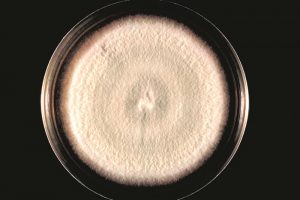After a long pause throughout the winter, they return in summer with a more aggressive kind. When the summer season begins, mold issue becomes a pain in many houses and people get amazed were all these molds were during the winter season?
Here are the factors that answer why mold growth unexpectedly increase throughout summertime:
It holds that mold development rate degrades during the winter season. Molds choose a warm environment; the rate of spore generation reduces when the temperature is low. Nevertheless, molds do not die in cold weather. They stay dormant and wait for the ideal conditions for life to come.
That’s the photo of outside. However, inside houses, offices or industrial facilities where the molds are already present continue dealing with the problem. Considering that doors and windows are kept closed during the winter season, indoor mold spores can not get out of your home with air present and stay inside leading to various health issues.
It holds that chances of mold intrusion from outside is relatively low than spring, summer or rainy days. Houses that are completely devoid of black mold are rather safe in the winter season. However, if a single bit of mold spores existed in your space when you closed the windows for the winter season, opportunities are they will continue to grow throughout the season.
At the end of winter, outdoors molds end up being active once again considering that they get the ideal temperature to grow. In case you had indoor molds, they must have been grown many times by this time. So the double attack makes life miserable.
Runny noses, watery eyes, breathing problems, wheezing, sneezing and coughing are the typical issues of mold infection.
If you haven’t got any signal of mold manifestation inside your home in the winter and now in summertime relative have started suffering from mold allergic reaction, opportunities are they have grown at covert places like behind the sidewalls, basement, crawl locations, above roof tiles and so on. You need to do an extensive inspection to find out the exact place of contamination. Then just you can proceed with the mold removal process.
Learn what eliminates mold:
Mold cleansing is a substantial procedure and dangerous too. While cleaning up molds you risk the opportunity of capturing allergy. Cleaning time exposure can show up to be very severe. And if you are using bleach to remove molds, you double the risk of illness. Nascent chlorine that comes out from lightening representatives is bad to breathe in and may cause allergic reactions also.
Natural cleansing items are safe as they do not have any side effects. Some safety measures must be taken while cleaning up molds. If you are doing it yourself, use masks and gloves compulsorily. Also, use safety glasses to secure your eyes from mold exposure. Open the windows and doors so that airborne mold spores and hyphal parts are taken out of the house by air.
Acremonium is a genus of fungi in the family Hypocreaceae. It used to be known as Cephalosporium.
Acremonium species are usually slow-growing and are initially compact and moist. Their hyphae are fine and hyaline, and produce mostly simple phialides. Their conidia are usually one-celled (i.e. ameroconidia), hyaline or pigmented, globose to cylindrical, and mostly aggregated in slimy heads at the apex of each phialide.
Epichloë species are closely related and were once included in Acremonium,[1] but were later split off into a new genus Neotyphodium,[2] which has now been restructured within the genus Epichloë.[3]
Mold cleaning is not a short-lived procedure. When you kill the mold you anticipate a long term security from hazardous black molds and mildews. Molds tend to come back and infect the same location again and again. Hence, you require to use mold cleansing items that successfully remove mold and block future mold formation.

